Medical professionals forecast somewhere between 130 and 176 million people globally will have dementia in 2050, dramatically rising from 57.4 million in 2019, meaning that the chances of developing a neurodegenerative disorder or knowing someone with one are increasing at an alarming rate. “Preserved Memories,” a solo presentation of installation work by Aazam Irilian at Gallery 825, tells the stories of five people who suffered from dementia-type neurodegenerative disorders and the stories of those who loved them in life and kept their memories alive. This is Irilian’s second time showing this body of work, and as the rate of dementia diagnoses continues to rise, her passion project expands with more profound significance.
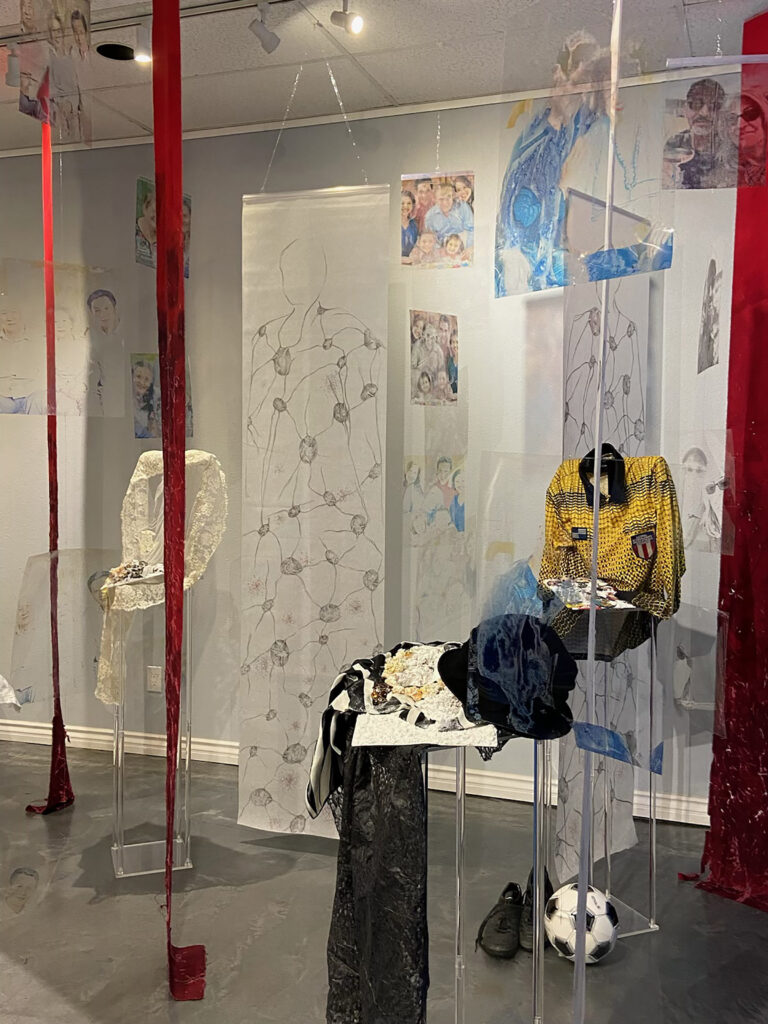
Each of the five stories is told in four parts. Flanking five sculptures are five floor-to-ceiling drawings of the human body swallowed by synapses starting below the neck called Transitional Bodies (2022). Five Shredded Mind Panels (2022), distressed red canvas panels with holes mimicking a decaying brain, accompany the drawings. Finally, a hanging chain of family portraits printed on Duralar clear paper identifies the subjects of the central sculptures, but the photographs are altered, so each face gradually loses clarity until it fades. Depending on the lighting and size of the gallery space that houses these works, the transparency of the paper translates the images onto the walls, further distorting these memories.
The dim overhead lights in Gallery 825’s small back room don’t quite project the images onto the walls, but what the room lacks in width, it makes up for in atmosphere. At certain angles, the portraits interact with the red panels, resembling stained glass. It feels more like a chapel than a gallery.
Together, these accessory elements illustrate the drastic collapse of the brain’s internal workings that is characteristic of dementia-type neurodegenerative disorders, such as Alzheimer’s disease.
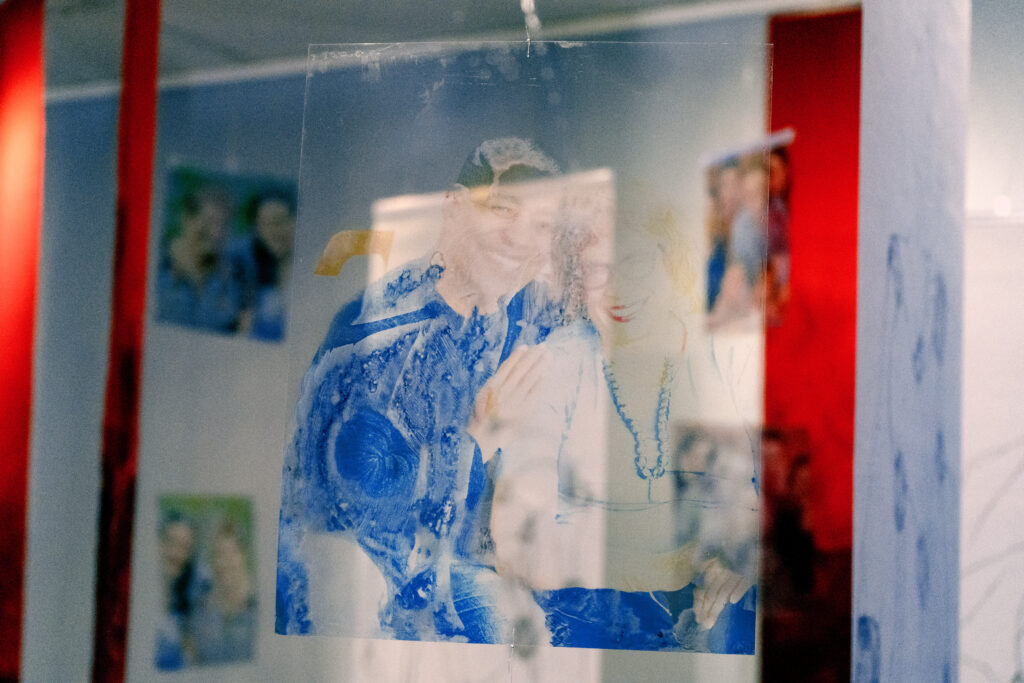
At the heart of “Preserved Memories” are the sculptures made from personal belongings that both distill and provide a window into the lives of their subjects. Clusters of salt crystals cling to the treasured items—Irilian grew these crystals in her studio to make assemblages from organic materials, found objects, and evolving technologies. In this body of work, salt acts as a natural preservative for the compiled belongings, and QR codes printed on a wall provide visitors with short audio recordings about each sculpture.
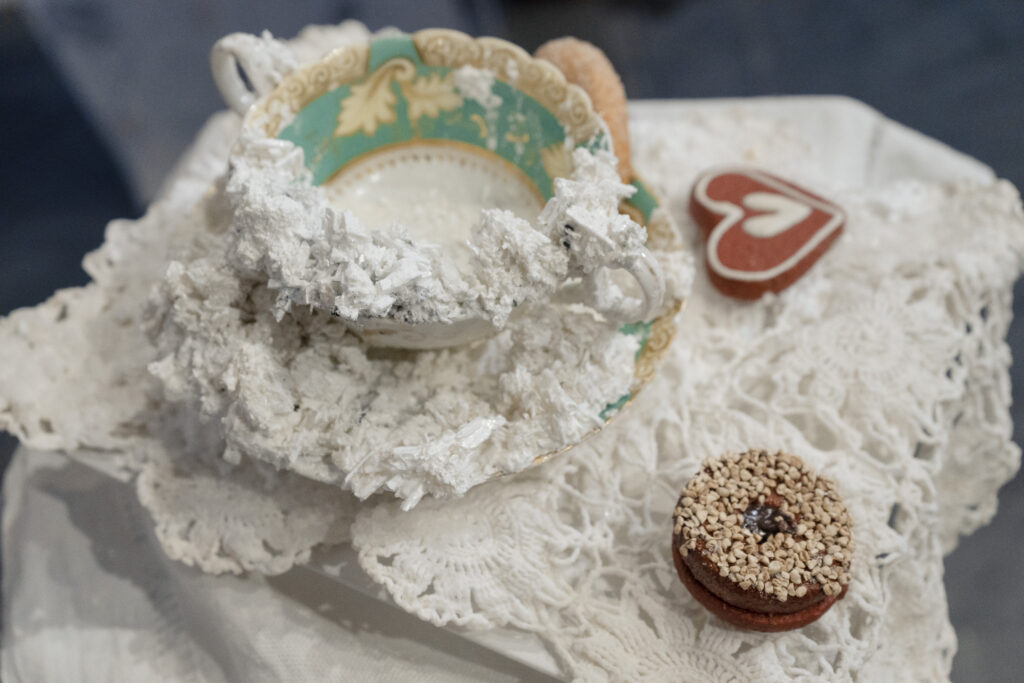
Tea Time (2022) spotlights a mint green and cream-trimmed teacup and saucer resting on a lace doily. These belonged to the mother of Ellie B, who purchased the set during one of their secondhand shopping adventures together. Ellie’s mother ate biscuits with her afternoon tea every day. In the late stages of her memory loss, she still remembered this teacup and refused to drink from any other vessel.
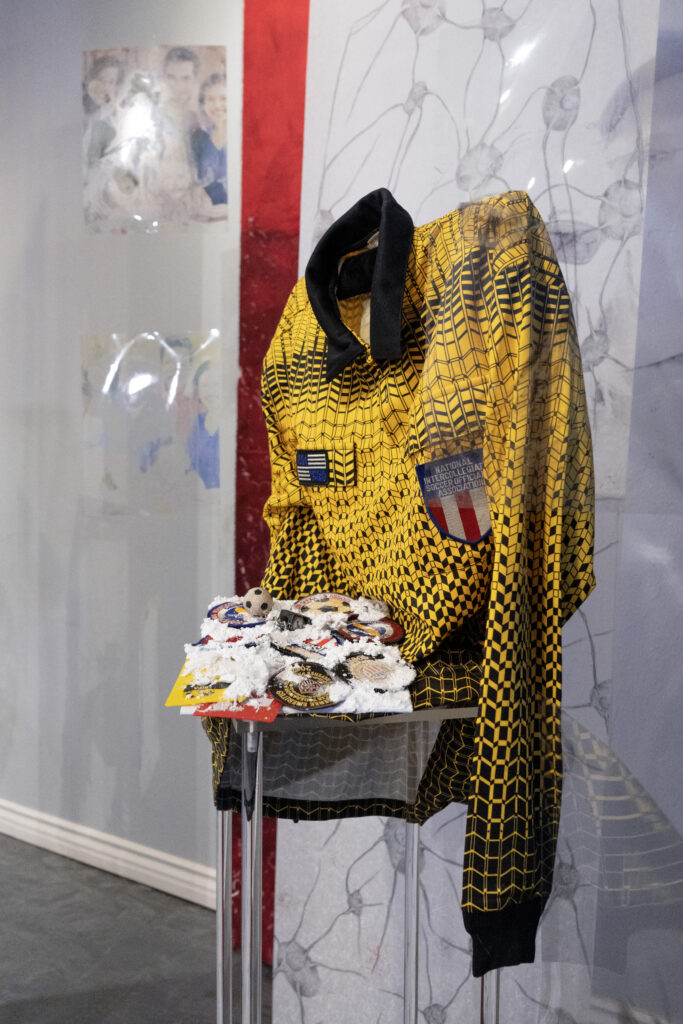
Another sculpture, Soccer Player (2022), reflects Irilian’s late husband, who passed away in 2023. One of his great passions was soccer, having been a player, coach, and referee over the course of his life. For a time, he maintained the ability to play with their grandkids despite his diagnosis. Still, eventually, the progression of his dementia deteriorated his verbal communication and motor skills until he could no longer be active. However, in her recording of this story, Irilian recalls seeing his face light up when they watched practices at a local park and official matches on TV.
Here, the artist hangs his yellow referee jersey near a pair of clean black cleats and a soccer ball as if ready for the next game. For a moment, melancholy bends to bittersweet comfort; seeing his worn-in and well-maintained gear, knowing he did what he loved, one feels Irilian’s husband must have had a happy life.
The initial motivation behind this exhibition was Irilian’s husband—how she loved him for many years as both wife and caregiver—and how they respectively dealt with their impending losses. But this experience of feeling people slip through our fingers is lamentably common.
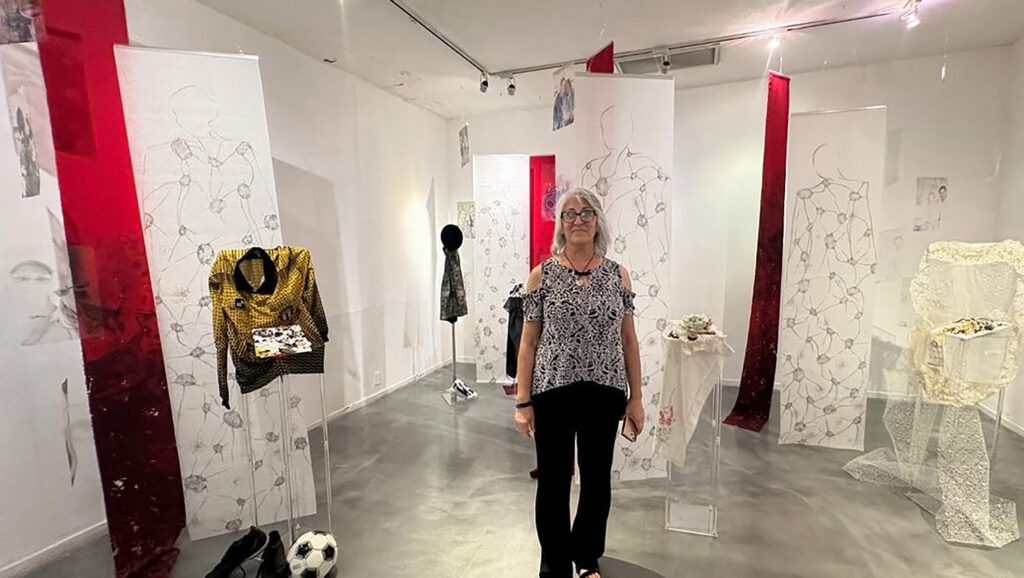
Understanding this, an integral part of the show is visitor response: on a table in a corner of the room are blank notecards for guests to write down memories of loved ones who suffered from these diseases. Irilian incorporates new cards into the installation by hanging them beside the entrance. On the table, there is also a sign with a phone number to call for those who may prefer to share their stories aloud.
Written on one card, a message from someone named Chris concludes with:
“To see yours + your husband’s story represented so beautifully here is yet another reminder of cherishing what we have while we have it and of holding onto the love and the memories—in the end, everything fades for all of us. Except perhaps, for love. And perhaps, that’s enough.”

As we age, we face decisions regarding our bodies, minds, legacies, and possessions. Who will take care of us? What will survive us? Will there be anything left to show of our lives?
“Preserved Memories” demonstrates how multiple methods of memory keeping can and should exist. Where photographs may wither, sculptures stand firm. When the written word fails, recorded voices can carry. The people memorialized in the sculptures once chose their items, and though their caregivers cannot keep every scrap of someone’s life, they can choose to continue imbuing meaning into certain objects as a representation of their loved ones.
Of course, people are not only their possessions; we know each other in different ways. Caregivers will remember their loved ones through these objects, and we, as visitors, will remember Irilian’s beautiful tribute to those who continue to be loved.
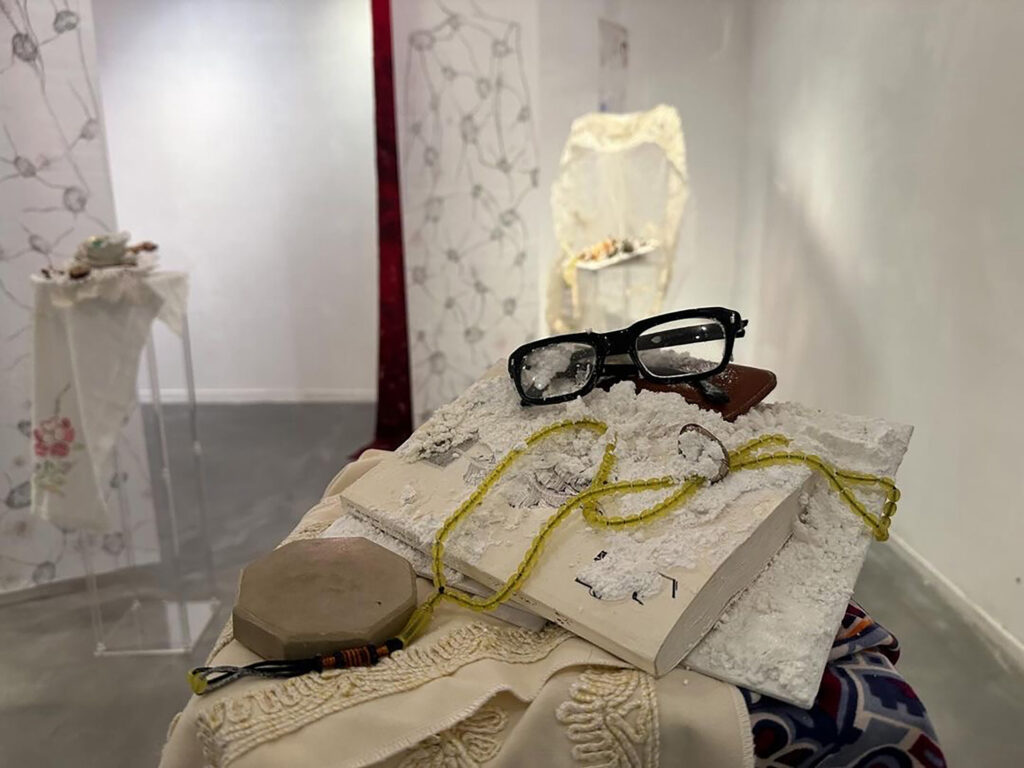
Aazam Irilian
“Preserved Memories”
May 4 – June 7, 2024
Los Angeles Art Association (LAAA) | Gallery 825
825 N. La Cienega Blvd Los Angeles,CA 90069




